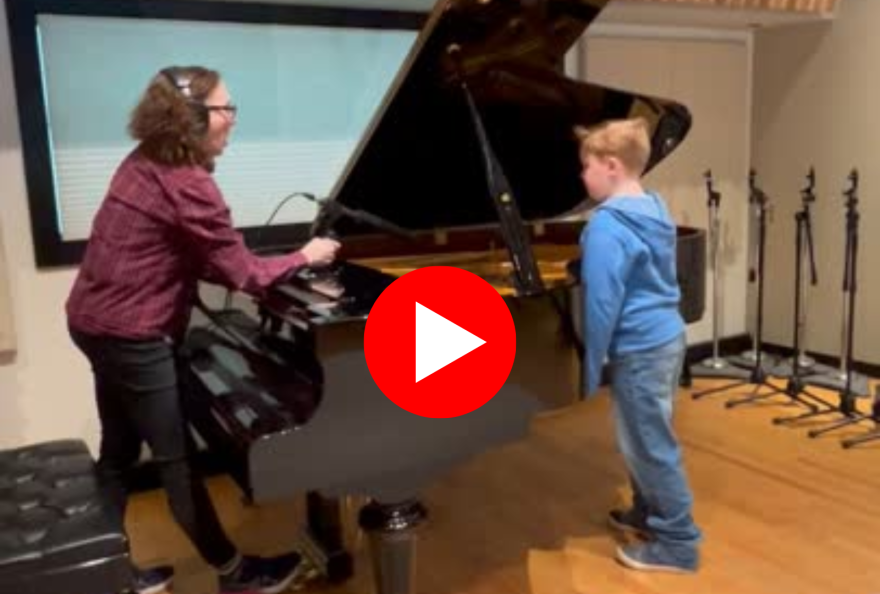Welcome to "Intermezzo" — where we take a few minutes to bounce some ideas around about classical music.
This week Christy L’Esperance is joined by 8-year-old cohost Andrew, a second grader with a love for games and a curious mind.
The topic of the week is resonance in nature. Here's an example... resonance explains why tiny birds can sound as loud as elephants and why drips of water echo so powerfully in caves.
To demonstrate, they head to Interlochen Public Radio’s Studio A for a hands-on musical experiment where Andrew learns how to “play” the piano with just his voice.
How? Andrew and Christy yell into the body of the piano causing other strings to vibrate and create sound in return — an audible example of acoustic resonance at work!
Acoustic resonance happens when sound waves vibrate in response to another sound wave, causing a louder or more resonant sound. When you YELL into the piano, the string that has the same pitch as your yell will yell back at you.
In classical music, resonance creates a fuller, richer sound. Here's an example of a piano piece that uses a lot of resonance: Beethoven's "Moonlight" Sonata.
If you want to discover more resonant music where you can hear vibrations inside a "ringy" piano, try another moonlight piece — "Clair de lune" (which is French for "Moonlight") by Claude Debussy. The performer uses a depressed pedal in the piano to create long, sustained vibrations from the piano strings and a full resonant sound.
** Web Bonus **
Joan Tower's "Sixth Fanfare for the Uncommon Woman" is full of resonance, aided by the depressed damper pedal. It really rings out toward the end.
Here's a recording from Interlochen pianist Kara Huber.
Submit your answer to today’s question
Hear today's full episode by clicking "Listen" above and if you know the answer to to this week's question, text the answer to 833.490.4718. By texting your answer, you agree to receive follow-up messages from IPR.
Christy L'Esperance is the host and producer of Intermezzo.
Thanks to our cohost Andrew.
Scott Clemens is IPR's Digital Content Producer.








